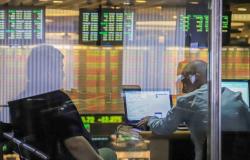In the last day the euro was negotiated at closing 39.36 Nicaraguan córdobas on averagewhich implied a change of 0.05% when compared to the 39.34 córdobas of the previous session.
If we consider the data from the last week, the euro registers an increase of 0.13%%so that in the last year it still maintains an increase in 1.66%.
Comparing this data with that of previous days, it chained two consecutive sessions in positive digits. In the last week, volatility presented a balance higher than the volatility reflected in the figures for the last year, so that the value experiences greater changes than the general trend.
For this 2024 the Gross Domestic Product (GDP) from Nicaragua will be 2.1%, according to the economic growth estimate issued by the Economic Commission for Latin America and the Caribbean (ECLAC). The projection is lower than the previous year’s, which was placed at 2.4% of GDP, one position behind Mexico.
He Central Bank of Nicaragua (BCN) projected a sustained growth in the global context of the slowdown of the economy, as well as geopolitical uncertainty, supported by macroeconomic policies.
The estimate of growth of economic activity of the BCN for 2024 is between 3.5% and 4.5%, improving by 0.5% compared to 2023, with the expectation that it will be maintained throughout the year, while the inflation concentrates between 3.0% and 4.0% under the context of international inflation.
He Córdoba is the monetary unit of legal use in Nicaragua and is abbreviated NIO; It is divided into 100 cents and its circulation is controlled by the Central Bank of that country.
The coin takes its name in honor of the second surname of the Spanish conqueror, Captain Francisco Hernández de Córdoba, who also founded the cities of Granada and León.
The córdoba was introduced on August 25, 1908, under the mandate of then President Adolfo Díaz, who issued a 10 córdoba coin that replaced the peso. The new currency had a value of 5 córdobas per pound sterling at the time.
On November 13, 1931, the córdoba began to be quoted at a parity rate of 1.10 córdobas per US dollar, but after several devaluations this changed to 7 córdobas per US dollar between 1946 and April 1979.
It was not until 1991 when the current administration launched a successful monetary stabilization plan which managed to stop the hyper devaluation and achieved price, exchange and monetary stability. Starting in January 1993, the country moved to the mini-devaluation system, which since 2019 has been 3% annually.
In economic matters, Nicaragua has registered significant falls. In 2018 and 2019, the Gross Domestic Product had decreases of -3.7% and in 2020 of -2%, however, significant increases followed in 2021 and 2022.
In recent reports, the World Bank has also estimated that under the government of Daniel Ortega, poverty increased by 13% in 2022.
Another of the great challenges that Nicaragua faces this year is that the country continues to be one of the least developed in Latin America, where having access to basic services is a challenge; as well as the havoc caused by the coronavirus pandemic.
Added to this context is that the country is immersed in a major political crisis which has led to Daniel Ortega to assume his fifth term in 2022.






